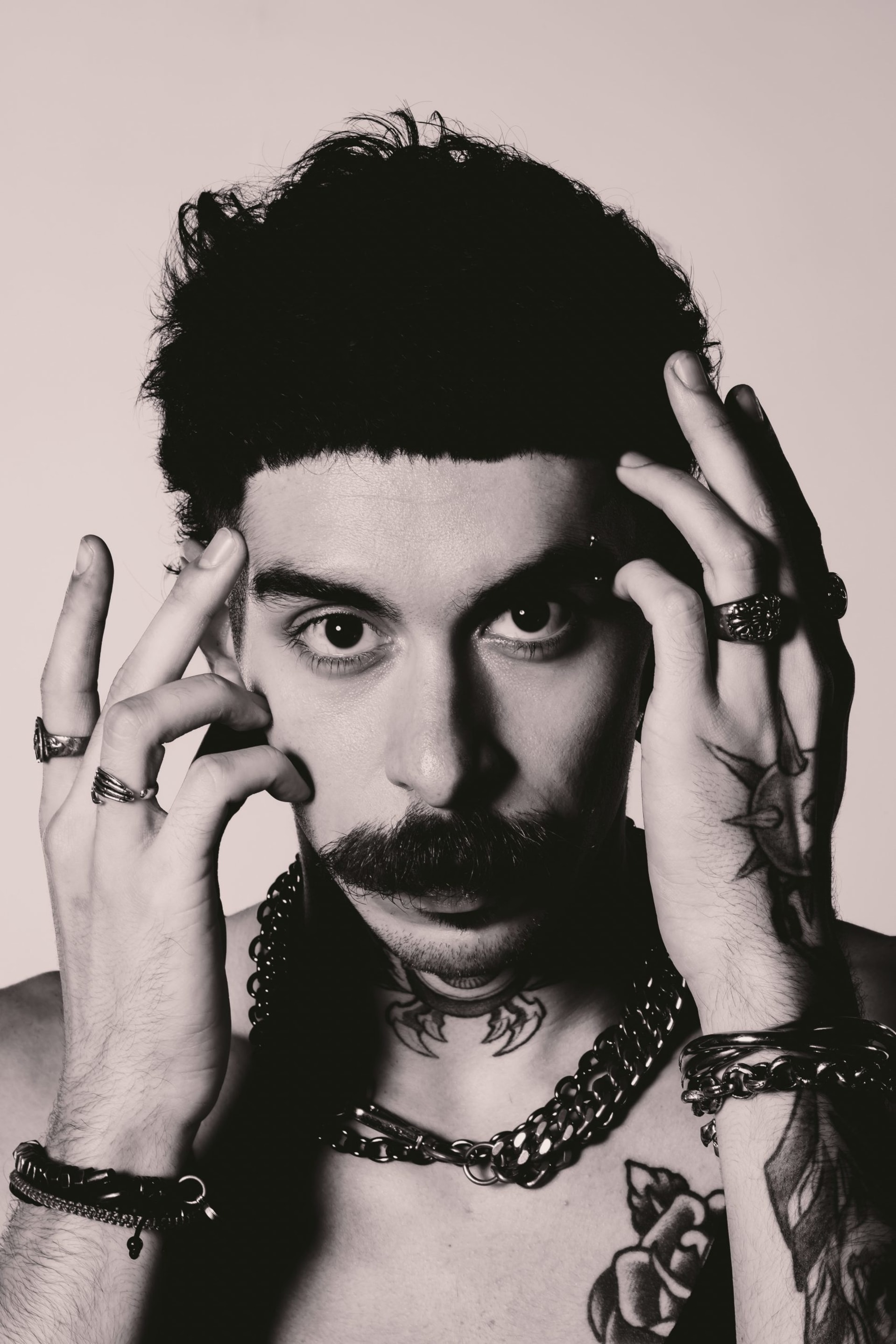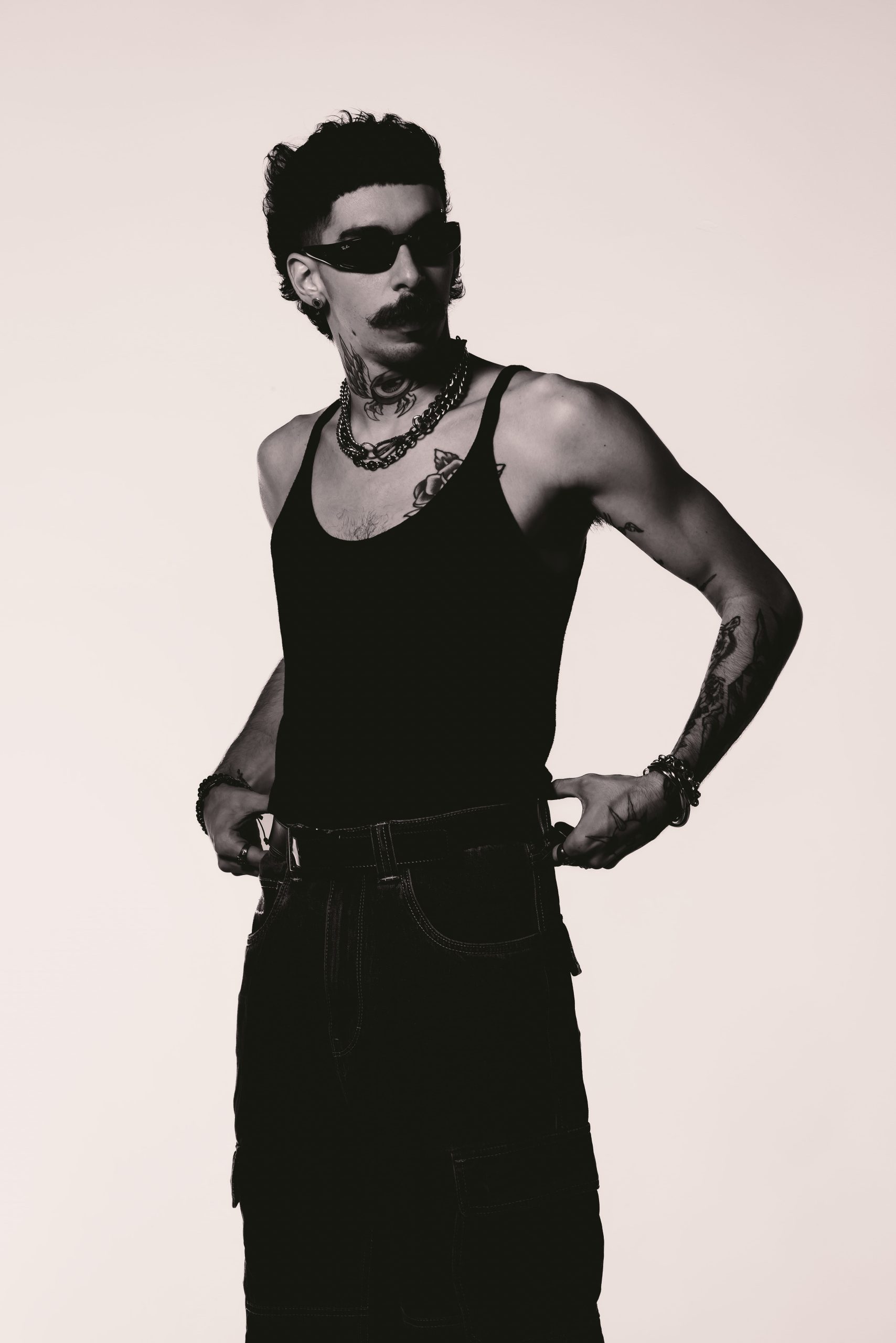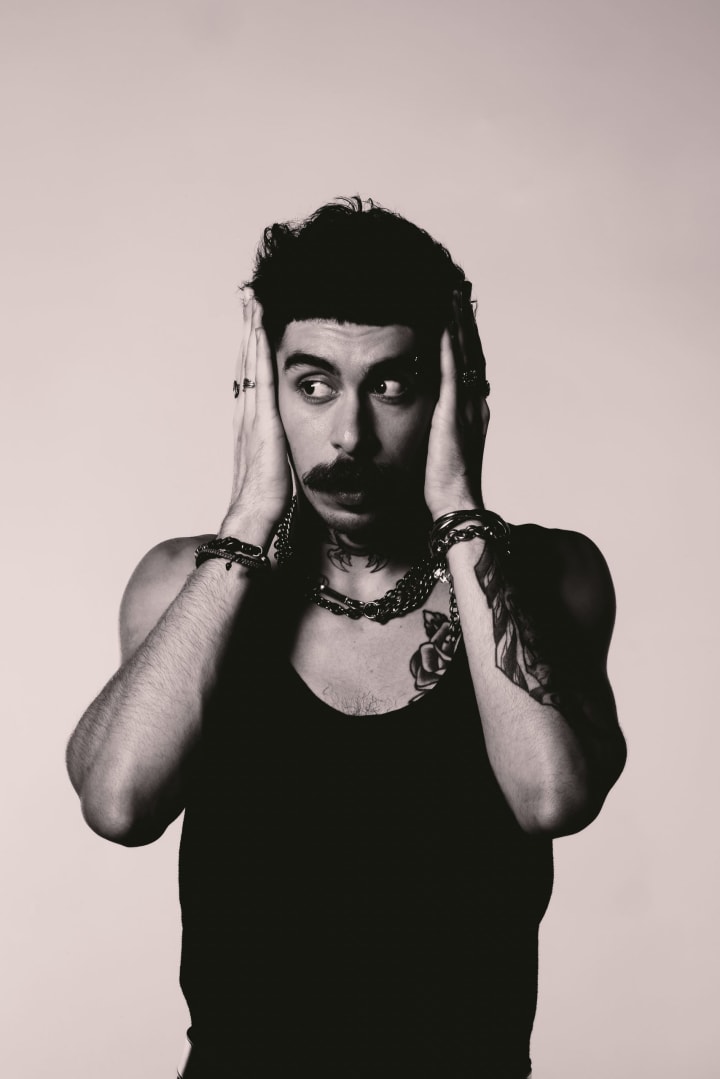
When Life is poured into Music
A Portrait of Mochakk

When Life is poured into Music
A Portrait of Mochakk
He looks like a skater, obviously listened to a lot of hiphop music, dances like a guru swan, but plays orgasmic house music. How does all this come together?
Marcus Boxler: How are you? And how is tour life?
Pedro Maia: I’m good, I’m at home. I’m spending a couple of weeks back here, doing mostly Brazil gigs. It’s been a little bit of a chilling, settling-down-moment.
Marcus Boxler: There’s a few topics that I wanted to discuss with you: fashion, international influence, culture, social media, masculinity, and of course: your music. First of all: How would you describe your visual style in terms of fashion?
Pedro Maia: Wow, I think it’s just like a big messy mix. A lot from skate culture, a lot of Rock influence from when I was a child. Also surf rock bands. It’s a mix of everything that appealed to me visually growing up.
Marcus Boxler: Do you take a lot of influence from visual culture like arts or design?
Pedro Maia: It definitely has an impact on me. Recently, I was watching a lot of YouTube videos about typography. Gave me a lot of insight, visually, even with fashion. Everything can be an influence. I grew up in the early 2000s. That’s when I saw most of the artists that would become my references, musically and visually. So everything I do kind of relates to that era: the early MTV, how all these aesthetics were shaped, from the way they filmed stuff, the cameras, they were using, the fashion. I think that the 2000s for my generation are kind of like the 80s for my parents. That sense of a golden era. A nostalgia about this time.
I went to fashion school for a semester before I went to music school. My mom was a fashion designer herself and I grew up helping her to do the drawings.
Marcus Boxler: This 2000s style, Y2K, is having a renaissance already, it’s becoming iconic.
Pedro Maia: The baggy jeans are here again.
Marcus Boxler: I’m wearing baggy pants right now. What do you look for when you choose new clothing right now?
Pedro Maia: The way it fits. The cut and the way it looks on my body. It really has to… hug my body.
Marcus Boxler: Are you looking into any collaborations yourself in terms of fashion: Jewelry or maybe some clothing collaboration?
Pedro Maia: It’s definitely something that we’re into, me and the team. Something that I always loved: I went to fashion school for a semester before I went to music school. My mom was a fashion designer herself and I grew up helping her to do the drawings. We don’t have anything ready and coming out but we’re working on it.

Marcus Boxler: I would love to switch to the main topic: To your music and its influences. The first time that I’ve recognized you was on my For You Page on TikTok.
Pedro Maia: For most of the people who follow me. Before that I had a much smaller group of fans.
Marcus Boxler: Of course, it surely had a huge impact on your popularity and reach in the past. Did it ever have an influence on your creative process?
Pedro Maia: Not on the music side. On the content side, though. The way we think about the rhythm of videos, the rate, where the information is being passed on those videos, the length. Every change to a platform makes a little bit of a change to the creation of the content. We grab mostly references from old school stuff. We’re very retrospective in that sense, but I think it’s something people have been doing recently.
Marcus Boxler: What kind of content do you consume on these platforms?
Pedro Maia: Pop culture stuff. I was watching a video about how the Desert Eagle became a pop icon last week. I think those things have more power over my content because it’s still, you know, content. For the sake of being content. Music is not content, for the sake of being content, for the sake of being entertainment only… Obviously, that’s education. Information is education and also video making is an art form as well. But my art form of choice is music. So I don’t shape my expression of life experience in a way that’ll perform commercially or in social media.
Marcus Boxler: Your video content is more about the vibe you give off. This is another topic that I really want to dig into. For instance your DJ sets are very performative and there’s so much gesture happening in a way that it almost becomes dancy or ritualistic. Do you love to dance yourself?
Pedro Maia: Yes. A lot. I went to dance academies and dance competitions when I was younger. Also, I used to be a B-Boy and freestyle hip hop dancer. I was not a good one, but that’s what I love to do. A DJ would play a random beat that he or she chose. And the dancers would freestyle on top of a beat, they never heard before. They would have to wrap their heads around what that music was about, sonically, in a short amount of time.
Brazilian music has very specific rhythm patterns for a lot of the genres that we have. From Samba to New School, Brazilian funk.
Marcus Boxler: And now it translates to you DJing?
Pedro Maia: Every DJ has these little moments of interaction with their crowd. Whether it would be a more introspective DJ, having just one quick look with somebody in the crowd. Or a quick nod. That was a small interaction when I was starting. When I acknowledged that somebody was really paying attention to the set that I was playing, I would instantly go to, like, showing music visually. I would start interacting with those people and be like: “Yo, check the next part of the song, no, check this next part. It’s gonna be this little element coming in. See? Here. Uh-huh. Got it.” And those interactions started to get more frequent and people started liking them. But it’s still an interaction thing. It’s about showing parts of a song to somebody just because I really want to show them the song.
Marcus Boxler: How important is it for you, personally, to balance the influence of your Brazilian musical heritage and international sound and influence?
Pedro Maia: Very important! Rhythms is a way of doing it. Brazilian music has very specific rhythm patterns for a lot of the genres that we have. From Samba to New School, Brazilian funk. Samba, for example, is two by four. Most Western music of the world is in four by four. It has a sound identity to it. Kind of the same way as I see architecture.
Marcus Boxler: You sure have a lot of Oscar Niemeyer architecture in Brazil
Pedro Maia: Yes, we have a whole city designed by him. The city of Brazilia, which is the capital of the country. It is entirely made and designed by him. And it’s shaped like an airplane and the neighborhoods are called “Wing A” or “Wing B”. It’s a big plane! He’s amazing. I’m trying to keep roots such as these architectural styles with my music, trying to keep those really specific things that each place has about its own music. It’s also about conserving a sort of social identity. And I think that’s just such a beautiful part of art in general. Until that fades away because of corporate reasons.

Marcus Boxler: Corporate corrupts art?
Pedro Maia: The thought process of making is then patronized, it’s becoming patterned. For what? At the cost of losing its soul. There is a fun fact about Karata Japanima, which is one of the most famous Brazilian songs ever. The key of the patronized “world version” has been changed for more international listening habits. It omits some of the melodies from the original one, some of the chords are omitted or voiced differently. For more of a functional harmony, an easier harmony. And that modified, broader version is the version in a lot of jazz books.
Marcus Boxler: Sometimes disharmony can be a bliss… One last question for you. We talked about obvious topics so far, but I wanted to touch on another topic with you: Masculinity. Approximately 75% of your followers on Instagram are male and the majority is between 18 and 35 years old. Arguably, this would be your target group. Do you think that male members of these younger generations, which we are part of as well, are searching for new role models? Who represents a new masculinity? Are you such a role model?
Pedro Maia: I don’t think people are actively searching for a role model that has those characteristics. But, society has evolved and reflected on some of the bad parts, like the toxic parts of masculinity. And people moved on with the idea. Now, it’s more of an open concept, more of a way that we can picture the evolution of the idea of masculinity in society. Rather than people actively searching for a role model to follow. Idolizing in general has become less frequent. Idolizing in terms of “standing for somebody”. That’s a little bit less frequent. And I think it’s healthy. It’s healthy for everybody. Why should we idolize some idea of masculinity nowadays? Screw it. Do your stuff. There still are people trying to even promote that obsolete idea of masculinity. But it just becomes cringe. To the majority of people who moved on with the idea. Those models just become so outdated and out of fashion. The whole world is gonna become more diverse and more in this “Screw-it” type of mentality about a lot of topics until we reach a point of maximum entropy.
Published March 23, 2023.
